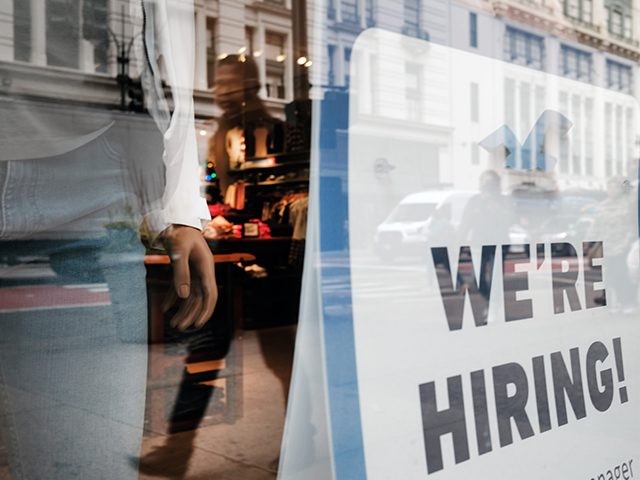The Federal Reserve’s campaign to rein in the worst inflation in decades will end in a recession.
That’s the message financial markets are sending out as Americans return to work from their Independence Day weekend celebrations.
You could see it in the bond market on Tuesday. The yield on the 10-year Treasury briefly fell below the yield on the two-year, inverting the yield curve and tripping one of Wall Street’s favorite recession alarms. The fed funds futures market now implies that the Fed will have to halt their interest rate hikes well short of the four percent that was priced in just a few weeks ago. Indeed, people are talking about the Fed cutting rates next year to avoid a deep recession.
Oil futures plunged on recession fears on Tuesday. The contract for West Texas Intermediate, the U.S. benchmark, fell below $100 for the first time since May 11. Brent crude managed to hang on to its $100 handle but only barely, falling 9.25 percent to $103. Copper prices, considered a reliable indicator because so much economic activity requires copper, have crashed deep into bear market territory, down 25 percent over the last four months.
We’ve written a lot about the manufacturing surveys of the regional Fed banks, but let’s revisit. The New York Fed’s manufacturing survey has been indicating contraction for two months. The Dallas Fed’s manufacturing index is also in its second month of contraction. The Philadelphia Fed clung onto to positive territory in May but could not stay above water in June. The Richmond Fed’s survey is in its second month with a negative reading. Only the Kansas City’s survey stayed positive in May and June. The Institute for Supply Management’s nationwide survey of purchasing managers showed orders falling for the first time since May of 2020.
It’s not just financial markets and manufacturers, of course. Consumer sentiment has fallen to the worst level on record. Consumer spending rose just 0.2 percent in May, the Commerce Department said Thursday. Adjusted for inflation, this dropped 0.4 percent. Spending on long-lasting goods fell by an unadjusted 3.2 percent from the prior month and 3.5 percent after inflation. Nondurable goods spending fell 0.6 percent after adjusting for inflation.
Household spending was also far softer in the first three months of the year than previously thought. The Commerce Department said last week that consumer spending rose at a 1.8 percent annual rate, down sharply from the 3.1 percent expansion reported in the prior report on the first quarter.
In opinion polls, Americans keep saying they think we are already in a recession. A majority of black and Hispanic adults believe that the recession is already underway, according to a recent Economist/YouGov poll. Overall, 58 percent of Americans say we’re in a recession—and just 23 percent say we’re not. The share of Democrats saying the economy is doing poorly has jumped from 37 percent to 67 percent over the past year.
As dire as that all seems, confounding data continues to pour in. Factory orders for May were much better than expected. The Commerce Department said orders for goods from U.S. factories were up 1.6 percent, more than three times what analysts had forecast. Much of this is because of inflation. It’s not so much that people and businesses are ordering more goods from factories. They’re ordering more expensive goods. That’s still a testament to the persistence of consumer and business buying power that has lasted longer than most people expected.
At the core of that is the very low rate of unemployment and very high rate of job openings. Demand for workers has remained very high, filling workers and spending power. Consumers might not like the economy because inflation is so high and just driving to work costs too much; but as workers, they are very confident they can find a new job.
This week we will get more insight into the health of the labor market. On Wednesday, the Department of Labor will issue the Job Openings and Labor Turnover Survey for May. Job openings exceeded expectations in the last four reports and quits have been running extremely hot, a sign of worker confidence. May’s expectations are a slight dip from April’s 11.4 to 11.25 million. Even if that decline happens, however, that is a historically very high number of openings. On Friday, we’ll get the unemployment rate and June jobs creation. Economists are expecting hiring to slow to 270,000 from 390,000 in the prior month. Unemployment, however, is expected to remain at the extremely low level of 3.6 percent.
So long as unemployment remains that low, it’s likely inflation will remain the top worry for households—even if economic growth stalls.

COMMENTS
Please let us know if you're having issues with commenting.